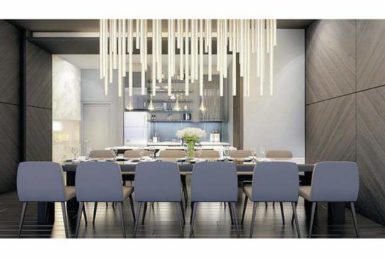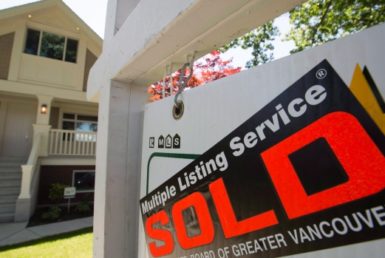The state of luxury housing: If $1 million buys you a DIY special then what is the new threshold?
The state of luxury housing: If $1 million buys you a DIY special then what is the new threshold?
- Peter Kuitenbrouwer/Financial POSTThis article appears in the May edition of the Financial Post Magazine.
Once upon a time, not that long ago, a million-dollar home was really something. You could picture such a home in your mind’s eye: a brick-and-stone estate, tucked behind an iron fence in a glade of stately oak trees. An MG, racing green, sits in a semi-circular driveway in front. Out back spreads a pool, teahouse and game court. Inside, fireplaces stud the grand salon and the ballroom.
These days in Canada’s big cities, $1 million doesn’t buy much. The average price of any ground-level housing in the Greater Toronto Area is now seven figures. “Any little piece of shit’s going for a million dollars,” says Desmond Brown, a real estate agent in Toronto with Royal LePage. “I sold one (in the middle of town). No parking. The main floor is gutted. It needs a total reno on all three stories. We got $970,000.”
If a million-dollar home is no longer anything special, then what is? Real estate search portal Point2 Homes recently released a list of the most expensive homes for sale in Canada. Perhaps not surprisingly, six of the 10 highest-priced homes are in British Columbia, two are in Alberta and two are in Ontario. Topping the list is Chelster Hall, a sort of red brick turreted castle near the shore of Lake Ontario in Oakville. The hall can be yours for a cool $65 million.
Only the super rich could buy such a home. What about your garden-variety successful banker, lawyer or doctor? Clearly, they’ll have to spend a lot more than $1 million in a big Canadian city to get a house befitting their status.
Not so fast. June Sommers has been selling real estate in Toronto for 45 years. She now works with her son, Andrew, through Royal LePage. The other night, one of the Sommers’ clients put in a bid on a house on Cheritan Avenue in a nice residential neighbourhood. “It was listed for $2.195 million, and it sold for $3.298 million,” Sommers says, with some shock in her voice. “Cheritan is not in tony Rosedale or Moore Park or Forest Hill.” She thinks the buyers wildly overpaid. “My people might have gone $2.5 or $2.7 (million).”
Luxury is becoming geographical instead of a price point
This particular sale disproves the theory that $3.25 million is the new threshold of luxury, since the Cheritan house is, by some measures, a bit ordinary. It’s a nice house, a boxy brown brick affair in a row of similar-looking houses. Dark brown shutters on its upstairs windows have little moons cut into them. A big maple tree graces the front yard. Inside, the home is renovated, with a side hall plan, new bathrooms and a new kitchen. Even so, the house has a shared driveway, to a semi-detached garage. And if you look closely at those shutters, the paint is peeling a bit.
Barry Cohen has some thoughts on luxury homes. Cohen dropped out of university after just one year, and began to sell real estate. In the past decade, he has been named Re/Max’s top salesperson in Canada four times. He has also posted the two highest recorded sales in Toronto this year. Cohen points out that Toronto is growing, but Ontario is not releasing land north of the city to build houses, so “we have all these condos” going up. A downtown house, therefore, has become relatively scarce.
“Luxury is becoming geographical instead of a price point,” he says. Thus “your vision of that big mansion on a big lot, and 8,000 square feet of living space,” still exists, but only out of town. In the city centre, a luxury home “doesn’t physically look like luxury.” It seems luxury is in the eye of the beholder. “To me, luxury was size,” he says. “To my wife, luxury might be the quality of the finishes.”
Cohen sold a house in Toronto’s exclusive Rosedale enclave in March. This house had the trappings of luxury: “Travertine Floor with Decorative In-Laid Border, Expansive leaded Glass Pane Windows Offering Extraordinary Panoramic Ravine Views, White Oak Hardwood Floors & Dramatic Free-Floating Custom Designed Staircase.” That, he says, was luxury, but it cost $10 million. “You don’t get much for $3.25 million in the way of luxury.” The Cheritan address, he notes, “does look like a very common house,” but he’ll happily take you to a townhouse in Brampton (a suburb about 45 kilometres northwest of Toronto) that is “luxuriously finished.”
It turns out that in many Toronto and Vancouver neighbourhoods, just acquiring any kind of property ownership toehold in 2017 is a sign that you have arrived.
Peter Kuitenbrouwer/Financial POST.
This article appears in the May edition of the Financial Post Magazine.
Financial Post Magazine




Join The Discussion